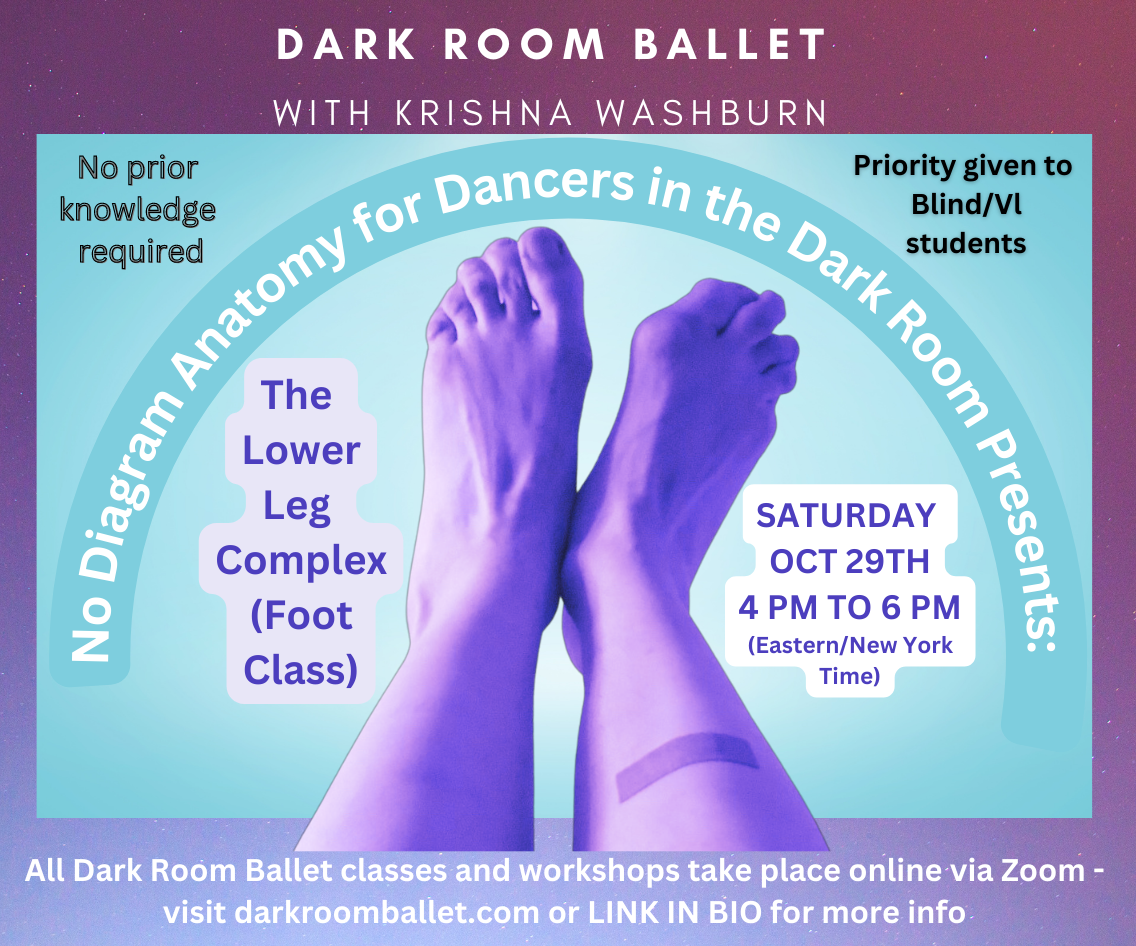Beginning Saturday, September 3rd from 4:00 PM – 5:30 PM (Eastern / New York Time)
NOTE: Sponsored by Movement Research, this class is designed specifically for the educational needs of blind and visually impaired adults.
About Saturday Introductory Level Class:
This is a FREE class!
This class is suitable for people with no prior knowledge of ballet. This repeating series of eight classes introduces students to the most common ballet vocabulary that they would need to know in order to participate in Open Level Dark Room Ballet Class. The class introduces students to necessary anatomical concepts like turnout, torso stability, foot sensitivity and mobility, sightless balancing, and the use of a taped floor for orientation.
Classes take place each Saturday online via the Zoom platform; there is also the option to call in via phone.
Register:
Please note that Dark Room Ballet Introductory Level Classes now operate as a scholarship program for new blind and low-vision students.
Learn more about the Dark Room Ballet Intro Level Scholarship Program.
The next Intro Level cycle begins on Saturday, September 3, 2022.
If you are a blind or visually impaired individual interested in learning ballet remotely, you MUST contact us by no later than August 26th, so you can complete the intake process to register for this class.
To register, email info@darkroomballet.com to begin the intake process
You can also reach Dark Room Ballet by phone at (929) 367-0025
If you have some ballet experience, you may also qualify to join the ongoing Dark Room Ballet: Open Level Class on Monday nights; please contact us if you are interested.
Returning students are welcome to re-join intro level classes, as well as encouraged to join Dark Room Ballet: Open Level Class. Please let us know if you would like to re-join intro class as a returning student.
If you work with an organization that serves blind or visually impaired people, please share this information with people who may be interested in registering for this class.
If you are NOT a blind or visually impaired student, you may qualify to join the ongoing Dark Room Ballet: Open Level Class on Monday nights on a select basis; please get in touch with us to explain your interest.
Other Classes in the Dark Room
In addition to online Introductory and Open Level ballet classes for blind and visually impaired adults, Krishna often teaches workshops on related topics open to everyone, including anatomy, improvisation and audio description.
Learn more about past and upcoming online workshops: Dark Room Ballet Workshops







